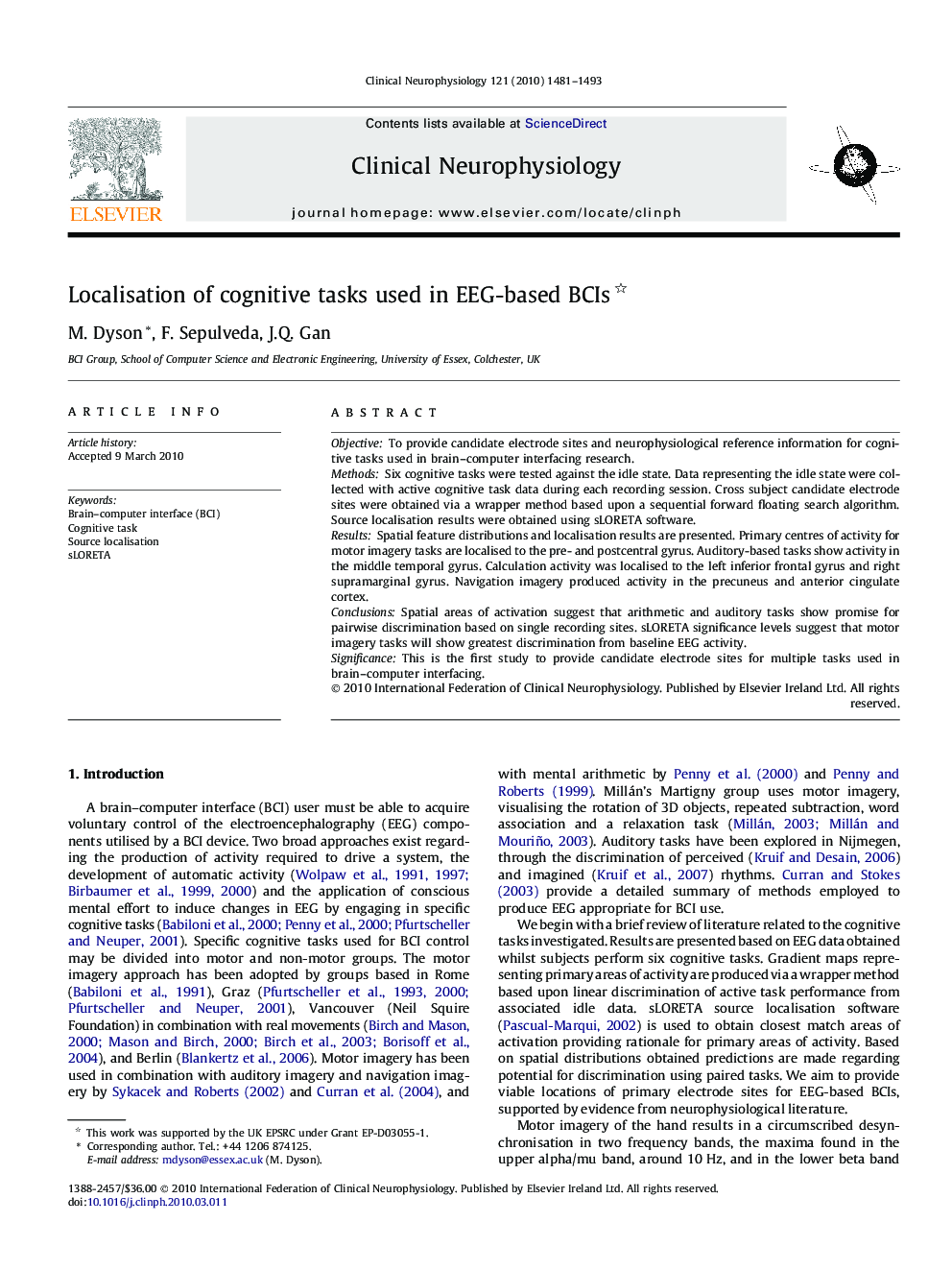| Article ID | Journal | Published Year | Pages | File Type |
|---|---|---|---|---|
| 3045594 | Clinical Neurophysiology | 2010 | 13 Pages |
ObjectiveTo provide candidate electrode sites and neurophysiological reference information for cognitive tasks used in brain–computer interfacing research.MethodsSix cognitive tasks were tested against the idle state. Data representing the idle state were collected with active cognitive task data during each recording session. Cross subject candidate electrode sites were obtained via a wrapper method based upon a sequential forward floating search algorithm. Source localisation results were obtained using sLORETA software.ResultsSpatial feature distributions and localisation results are presented. Primary centres of activity for motor imagery tasks are localised to the pre- and postcentral gyrus. Auditory-based tasks show activity in the middle temporal gyrus. Calculation activity was localised to the left inferior frontal gyrus and right supramarginal gyrus. Navigation imagery produced activity in the precuneus and anterior cingulate cortex.ConclusionsSpatial areas of activation suggest that arithmetic and auditory tasks show promise for pairwise discrimination based on single recording sites. sLORETA significance levels suggest that motor imagery tasks will show greatest discrimination from baseline EEG activity.SignificanceThis is the first study to provide candidate electrode sites for multiple tasks used in brain–computer interfacing.
